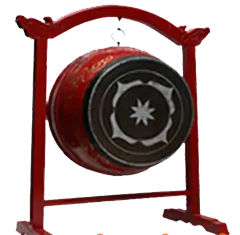
Mô tả sản phẩm
Thi nghi thức đội hoặc các hoạt động đoàn đội thường xuyên diễn ra không chỉ trong nhà trường, do đó việc học đánh các bài trống đội đã được đưa vào giáo dục trong nhà trường. Với 1 bộ trống đội Tân VIệt các bạn nhỏ sẽ có thể học hỏi được nhiều hơn quen thuộc hơn với các nghi thức đội.
>>>>>> MUA TRỐNG ĐỘI GIÁ RẺ
Trong chương trình Giáo dục tiểu học, Trung học cơ sở không thể thiếu mảng sinh hoạt Đội. Được coi như là một cách giáo dục về văn thể mỹ cho học sinh bên cạnh các kiến thức học trên lớp. Sinh hoạt Đội gồm có các phần tìm hiểu kiến thức về truyền thống Đội, các nghi thức sinh hoạt, cách đánh trống Đội,thi nghi thức Đội và cần có các đồng phục, sổ sách, bộ trống Đội, cờ, huy hiệu... phục vụ.
Sau đây Tân Việt xin giới thiệu các bạn đánh các bài trống đội chuẩn và hay nhất.

- Trống Chào cờ: Thực hiện trong Lễ Chào cờ theo Nghi thức Đội.
- Trống Chào mừng: Thực hiện trong Lễ đón đại biểu, Lễ Chào mừng.
- Trống hành tiến: Thực hiện khi diễu hành và duyệt nghi thức Đội.
I. Hướng dẫn kỹ thuật đánh trống
Cách đánh như sau:
* Tay phải cầm đùi úp xuống, đánh vào nốt chính: Ký hiệu bằng số: 1, 3, 5, 7, 9 (đánh mạnh hơn)
* Tay trái (tay ngửa), đánh vào các nốt phụ: Ký hiệu số: 2, 4, 6, 8 (đánh nhẹ hơn)
* Đánh nốt “hoa điểm”, đánh đồng thời cả hai đùi trống cùng một lúc tay phải mạnh, tay trái nhẹ: Ký hiệu 1/ hoặc 2/ hoặc 3/.
* Trống cái đánh vào những nốt có dấu *
II. Cách đánh cụ thễ từng bài:
1. Trống Chào cờ: Thực hiện 3 hồi trong lễ chào cờ theo Nghi thức Đội. Mỗi lần cách nhau một phách nghỉ. (Vào nhịp vừa phải theo hành khúc). Sau khẩu lệnh “Chào cờ chào !” Trống hiệu nổi lên bắt nhịp để trống con vào
+ Trống hiệu (trống cái):
* * * * *
(5 tiếng đều nhau)
+ Trống con:
1 2 3 4 5* - 1 . 2* - 1 . 2* (1)
1 2 3 4 5* - 1 . 2* - 1 . 2* (2)
1 2 3 4 5* - 1 . 2* - 1 . 2* (3)
1 2 3 4 5* - 1 . 2* - 1 . 2* (4)
1 2 3 4 5* - 1 . 2* - 1 . 2* (5)
1* 2 3* 4 5* 6 7* 8 9*
Nghỉ một nhịp rồi đánh tiếp hồi thứ 2, thứ 3.
+ Trống cái đánh vào các nốt có dáu *
2. Trống Chào mừng:
Thực hiện trong lễ đón đại biểu, lễ chào mừng.
(Trống con và trống cái vào cùng lúc, trống con đánh theo số, trống cái đánh vào nốt có dấu * bên cạnh). Sau khi dứt hiệu lệnh của người chỉ huy cả trống con đều vào nhịp thứ nhất luôn.
+ Cách ghi bằng số:
1/* - 1 2 3 4 5* - 1 2 3* – 4 . 5*
1 2 3 4 5* – 123* – 123* – 123*
1 2 3 4 5* – 123* – 123*
(Cứ một lần chào mừng đánh 3 hồi)
3. Trống Hành tiến:
Khi dứt hiệu lệnh của người chỉ huy, trống hiệu nổi lên bắt nhịp để trống con vào.
+ Trống hiệu: * * * (3 tiếng đều nhau nhịp chậm vừa phải)
+ Trống con:
1/* - 1 2 3 4 5*
1/* - 1 2 3 4 5* . 6 . 7*
1 2 3* - 1 2 3* . 4 . 5*
1* 2 3* 4 5* 6 7* 8 9*
1/*- 2/* - 3/*
1/* - 2/* - 3/*
1 2 3* - 1 2 3 4 . 5*
1* 2 3* 4 5* 6 7* 8 9*
(Trống cái đánh vào nhịp có dấu *)
Chú ý:
* Bài trống chào mừng thực hiện 3 lần khi sử dụng riêng, thực hiện 4 lần khi phối hợp với kèn.
* Bài trống chào cờ thực hiện 3 lần, cuối mỗi lần ở chỗ dồn từ 1 đến 9, chỉ huy giữ nguyên cờ, sau đó đánh tiếp từ phách ngược (1 2 3 4).
* Cách đeo trống: dây trống vắt qua vai trái, mặt trống cái để chếch với mặt đất 1 góc 75 – 85 độ, mặt trống con để chếch với mặt đất 1 góc 15 – 30 độ.
Để có một bộ trống đội đẹp nhất , chất lượng nhất , giá cả ưu đãi nhất xin quý khách gọi theo đường dây nóng 0977234398 Gặp A Tân để được tư vấn miễn phí về sản phẩm trống đoàn đội cũng như các bài đánh trống đội.
Sản phẩm đã được thêm vào giỏ hàng




























